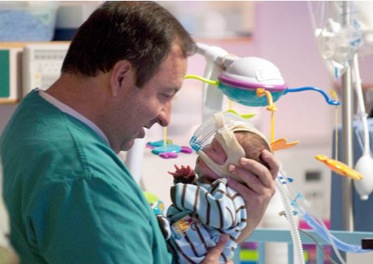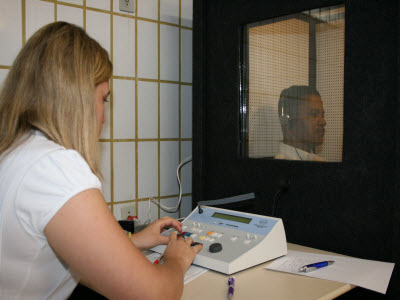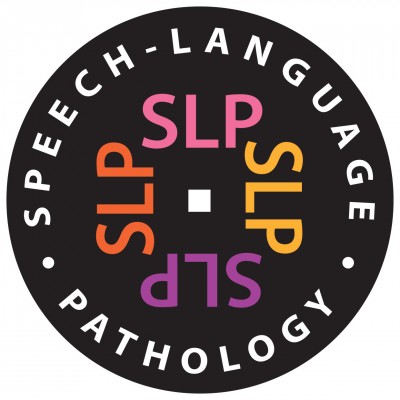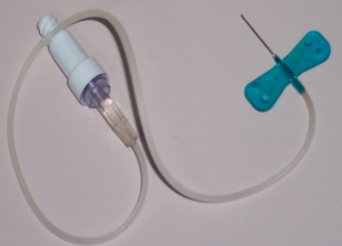Top 21 Respiratory Therapist Interview Questions
1) Explain what is the role of respiratory care?
During emergency, respiratory therapist provides assistance and help to people who are unable to breath due to injury or illness. The role of the respiratory therapist is to assume primary responsibility for all respiratory care. It includes oxygen therapy, breathing treatments, humidity aerosol therapy, mechanical ventilation, cardio pulmonary resuscitation and pulmonary drainage system.
2) Explain what is aerosol?
A suspension of solid or liquid particles in a gas is known as Aerosol. Example of aerosol includes dust particles, air pollutant, pollens etc.
3) Explain why aerosol therapy is given?
Aerosol therapy is given to treat upper airway edema, overcome heat and humidity deficit in patients with tracheal airways and to help to get sputum specimens
4) What are important parts in the upper airway of human respiratory system?
Principal components of upper airway of human respiratory system is
- Nose
- Nasopharynx
- Oropharynx
- Laryngopharynx
- Larynx
5) Explain what is Anticholinergic?
Anticholinergic agent is a chemical substance which blocks the neurotransmitter acetylcholine in the peripheral and the central nervous system.

6) List out the consequences of inadequate humidification?
Inadequate humidification causes
- Decreased ciliary activities and mucus movement
- Inspissation of mucus
- Mucosa Inflammation
- Bacterial infiltration, pneumonia and atelectasis
- Inspissation of mucus
7) Explain what are the tools used by respiratory therapist?
Various tools used by respiratory therapist are
- Ventilators: Ventilators are machines that breathes for the patient who are not able to breathe on their own and allows respiratory therapist to fix the amount of air and pressure required by the patient
- Spirometer: To measure the patients lung capacity spirometer is used, where a patient has to blow all the air from their lungs, from the patients blowing ability, their injury or illness severity can be predicted
- Blood gas analyzer: Normal human being contains around 95 to 100 percent of oxygen, blood gas analyzer checks the amount of oxygen from the blood specimen, anything below 100 percent is considered as a complication
- Volumetric exerciser: To increase the lung efficiency and to bring back the normal rhythm of breathing in ill patient, volumetric exerciser is used
- Inhaler and Nebulizer: Patient having asthma attack and other breathing problems inhalers and nebulizer are used to administer the medication
8) Mention what are five mechanisms for adding humidity to a gas artificially?
To add water vapor to gas, these are the methods used
- Bubble
- Passover
- Wick
- Membrane humidifier
- Heat and moisture exchanger
9) Explain why humidity therapy is necessary when supplemental oxygen is given to patient?
Alone supplemental oxygen can result in drying of the airways and reduce the cilia mobility, so in order to avoid this humidity therapy is given.
10) Explain what is Bronchospasm?
The immediate contraction of the muscles in the walls of the bronchioles is referred as bronchospasm. It is activated when there is a release of substances from mast cells or basophils. It causes problems in breathing which can range from severe to mild. Classic example of bronchospasm is Asthma.
11) Mention what is the treatment for bronchospasm?
The treatment involves administering the patient with drugs with B-blockers drugs this drug will bind with B2 receptors and block the action of Norepinephrine and epinephrine which causes the shortness of breath.
12) Explain what bronchodilator is and how it is used?
Bronchodilator is a compound that dilates the bronchioles and bronchi, results in decreasing of resistance in the respiratory airway, and at the same time increasing the airflow to the lungs.
13) Mention the advantages of having respiratory therapy?
It helps patient to identify the actual reason behind the respiratory disorder and can opt for a solution like
- Nutritional assessments ( Allergies towards any particular food items)
- Strategies for feeding
- Oxygen treatment
- Prophylactic antibiotics ( encourages airway function)
- Nebulizers
- Inhalers and Intubation
There are few secondary conditions as well that can be diagnosed and treated like
- Cough or cold
- Breathing conditions like Asthma
- Identifies gastro-intestinal complications
- Sleep apnea
14) What should patient do if they caught in asthma attack and had no medication?
If patient has no medication when there is asthma attack, he could follow the following things
- Stay calm as much as possible
- Take long and deep breath ( breath out through mouth and breath in through nose)
- Identify the trigger component and get away from it
- Sit upright – bending or sleeping may worsen the attack
- Take hot caffeinated beverage
15) Explain what is Emphysema? What is treatment?
Emphysema is a lung condition where the tiny sacs ( Alveoli) in the lungs fill up with the air. As the air expands in the alveoli, it may break or damaged and form scar tissue. It is one of the chronic pulmonary disease. Regular smoking is one of the main reason behind emphysema.
This complication is incurable, yet there are certain therapy and medication which can slow down the progression of this disease like antibiotics, bronchodilators, steroid aerosol sprays, oxygen therapy and stop smoking.
16) Explain why patient pH is measured before giving them Respiratory therapy?
Before treating patient it is important to know its acidotic/ alkalotic balance, it help therapist to assess his lung function and to decide what testing is further required by the patient.
17) What infection control protocol should respiratory therapist should practice prior to see any patient?
In U.S.A, HISAD (Healthcare Infection Control Advisory Committee) protocol is considered one of the best sterilizing protocol used for apparatus and equipment apart from that respiratory therapist can follow personal sanitization protocol as well before seeing any patients.
18) Explain what is arterial blood gas sampling?
Arterial blood gas sampling is a test used to know the pH of the patient. It is very helpful to diagnose any chronic or acute respiratory failure.
19) Explain what is MERS?
MERS stands for Middle East Respiratory Syndrome, it is caused by a virus name coronavirus ( MERS-CoV) typically found in Middle East especially in Saudi Arabia. The virus belongs to a wide family which can cause common cold to Severe Acute Respiratory Syndrome (SARS).
20) What are the typical symptoms of respiratory system disorder?
Respiratory symptoms disorders are
- Lethargy, drowsiness and general fatigue
- Confusion, disorientation and anxiety
- Poor appetite and weight loss
- Hiccups and yawning
- Increased heart rate and shallow respiration
- Difficulty in coughing and clearing the throat
- Weight loss and poor appetite
21) What are the steps you can take to minimize respiratory complications?
To minimize respiratory complications you have to follow the following steps
- Place more fans in the house to keep air fresh and circulating
- Get vaccinated if a person is having flu or pneumonia
- Do respiratory exercise regularly
- To cough up respiratory secretion more easily use medications like expectorants with physician guidelines
- If person having serious respiratory problems then use feeding tube, so food don’t get stuck in air pipes
- Raise the head of the bed while the person is lying down






